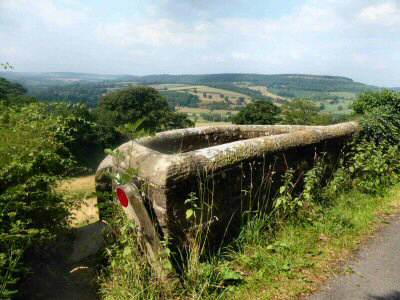STANTON-IN-PEAK
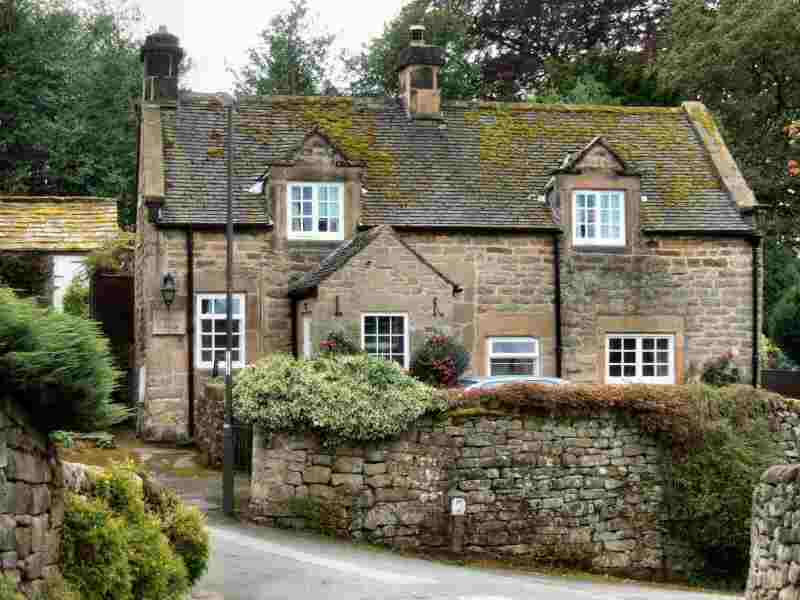
PLAN YOUR VISIT
Location: Stanton-in-Peak is off the 5056 Grangemill {A5012} to A6 road that links Matlock and Bakewell – SK241643
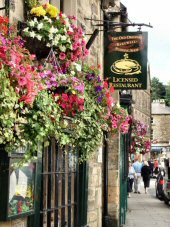
Visit: Stanton Moor, an isolated gritstone outcrop in the heart of limestone country. On the bracken-clad moor is Nine Ladies Stone Circle. – Walk along the lane towards Rowsley to the Stand. A viewing platform with a stone seat gives you a magnificent panoramic view over the valley where the River Bradford joins the Wye at Fillyford Bridge. – Enjoy a walk around the village.
Refreshments: The award-winning Stanton-in-Peak pub, named after a racehorse, is a little gem. The Good Pub Guide has recommended it in the past.
Walk: Birchover and Stanton Moor Walk is a delightful walk that requires only the minimum effort yet still manages to provide a rich diversity of scenery. It is easy to link up from Stanton-in-Peak by walking up Lees Road, heading towards Nine Ladies Stone Circle, and following the walk around from that point.
Special Places of Interest: Visit the Nature Reserve at Peak Village, the Peak District’s first and only factory outlet shopping centre, set in beautiful surroundings at Rowsley. – Bakewell boasts picturesque stone buildings, a medieval five-arched bridge over the River Wye, a splendid museum and a rich history dating back to Anglo-Saxon times. – The ancient village of Youlgreave winds its way carefully along a narrow limestone shelf, between two of the area’s loveliest valleys. Bradford Dale is to the south and on the other side of the hill Lathkill Dale, which is considered by some to be Derbyshire’s finest dale.
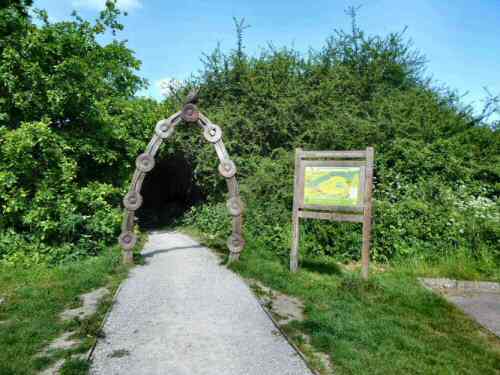
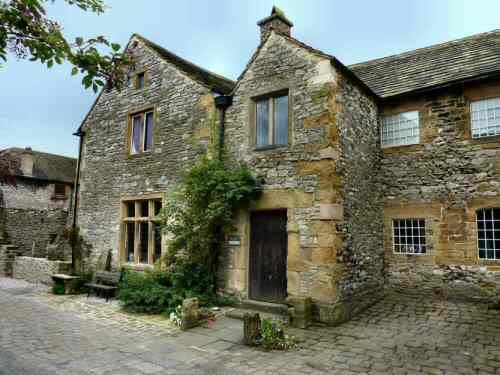
INTRODUCTION
Stanton in Peak is a stunningly attractive village with fine views over the River Wye towards the hills of north Derbyshire. It is a little off the beaten track, about half a mile from the busy B5056, along a minor road which winds up the hillside to reach the village centre before continuing its climb towards Stanton Moor. Most of the stone used in the construction of the village originated from the moor.

A detailed exploration on foot best reveals the village’s charm and character. Its pretty little gardens, small courtyards, narrow alleyways, and fantastic panoramic views invite admiring inspection. Stanton Hall hides behind a high wall along the village street, which runs alongside the road for about 300 yards. Bache Thornhill built the wall early in the 19th century to enclose a 130-acre deer park.
STANTON HALL
The western side of Stanton Hall commands magnificent views. It was built in the late 16th century and extensively rebuilt in 1693. A century later, Bache Thornhill extended it. But today, the hall is reduced in size. For many generations, it was the home of the Thornhill family, who were responsible for the majority of the buildings in the village.
The village is very ancient, having been granted a Royal Charter in 968. Many of its houses date from the 17th and 18th centuries. Those built in the early 19th century mostly carry the initials’ WPT’, indicating they were erected on behalf of William Pole Thornhill. The Thornhill family also built the tower on the eastern edge of Stanton Moor with the inscription ‘Earl Grey 1832’. It commemorates Earl Grey’s Reform Bill, which eventually gave every Englishman the right to vote.
When the Reform Bill was first heard in Parliament, only 5% of the population of England, Scotland, and Wales had the right to vote, which was considered by many to be unjust. There were constituencies with only a few voters, two MPS, and others that were much larger, with none.
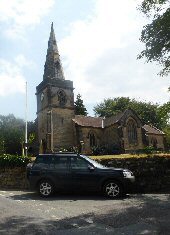
CHURCH OF HOLY TRINITY
In 1839, the Thornhill family built the Church of Holy Trinity as a private church. But, later that century, it became the parish church. It has a tall spire; unusually, the nave lies from south to north. Inside, there is a bronze Italian water stoup from Bellini’s workshop. The church stands almost adjacent to Stanton Hall on the steeply climbing hillside, surrounded by immaculate green lawns and a well-kept `Garden of Remembrance’. Outside the church, by the roadside, is a pretty arbour with welcome benches on either side of the War Memorial for those toiling up the hillside.
THE VILLAGE
The three-storey Holly House is one of the village’s earliest and most unusual houses. It faces the main street, with eight of its fourteen windows remaining blocked to avoid the dreaded window tax of 1697. Opposite is the award-winning village pub with the strange-sounding name of Flying Childers. Converted from four cottages in the 18th century and named after a famous 18th-century racehorse owned by the fourth Duke of Devonshire and trained by Sir Hugh Childers. At the end of its racing days, the Duke retired the horse to his stud at Chatsworth.
The reading room, now the Village Hall, was built by the Thornhills, as was The Stand, known initially as The Belvedere. The stand is a viewing platform with a stone seat along the road to Rowsley. From it, you get a magnificent panoramic view over the valley where the River Bradford joins the Wye at Fillyford Bridge.
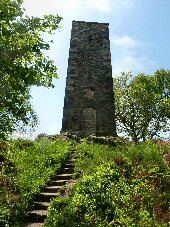
CRICKET CLUB
On the village’s southern edge, the well-maintained local cricket ground, with its sloping site, has one of the prettiest views of any cricket pitch in the country. Visiting teams must enjoy playing in such a lovely location, which might make losing a bit more bearable!
STANTON MOOR
Towering above the village is Stanton Moor, which rises to 1,096 feet above sea level and offers genuine moorland terrain. It is an isolated gritstone outcrop in the heart of limestone country and one of the richest prehistoric sites in Derbyshire. Although relatively small, it feels isolated despite its proximity to Stanton-in-Peak in the north and Birchover in the south.
On the edge of the bracken-clad moor, there are superb views of the surrounding countryside. Several impressive boulders and reminders of the past are on the moor, which is easy to reach from the road from Stanton to Birchover. It provides good level walking and is a great favourite with the public.
The Heathcote family, father and son, excavated more than 70 burial mounds on the moor. Both were noted amateur antiquarians. They built up a fascinating private museum in the old village post office at Birchover. The collection was transferred to Sheffield West Park Museum when Percy Heathcote died.
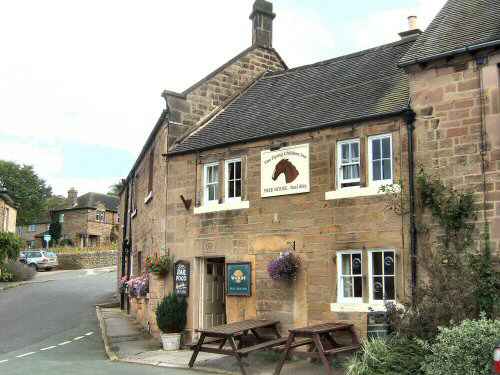
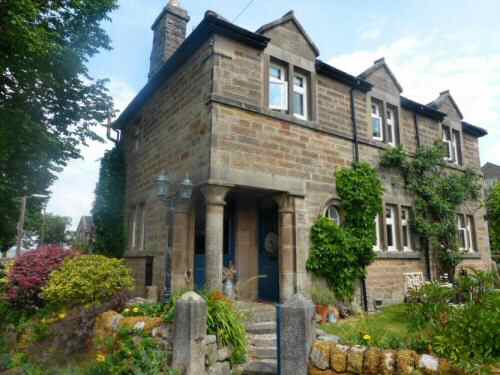
TEN FASCINATING FACTS ABOUT STANTON-IN-PEAK
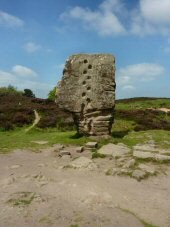
1. Stone quarrying has been an important industry in the area for a long time and has employed local people. Towards the end of the 19th century, out of 717 local people, 103 were quarry workers.
2. Quarrying in such a beautiful area has been contentious for several years. The area has been the scene of encampments resistant to quarrying.
3. The former village post office and combined general store, now a private house, is on the footpath to Congreave, where rabbits were kept to supply the Haddon Hall tables. The name Congreave means ‘rabbit hole’.
4. Stanton-in-Peak’s former Methodist Chapel, built in 1829, stood near the village’s top but is now closed.
5. The parish has two other small hamlets, Pilhough and Stanton Lees.
6. The Nine Ladies Stone Circle is the most famous relic on the moor. The circle was probably the scene of Bronze Age ceremonies dating back to about 1.500 BC.
7. The stone circle’s name comes from the legend that nine ladies danced here on Sabbath Day and were turned to stone as punishment, along with the fiddler who stood nearby.
8. The Cork Stone on the south side of the moor is a natural pillar about 15 feet high. It has iron footrests driven into it for those who want to climb to the top. Composed of weathered sandstone, it resembles a giant cork.
9. On the outskirts of Stanton Moor is the charming village of Birchover, most of its fine old cottage buildings sheltering under a tree-lined ridge.
10. Specsavers recently sponsored the new club shirts for Stanton-in-the-Peak Cricket Club. Whether you wear spectacles or not, the view from the ground is magnificent. Stanton-in-the-Peak Cricket Club spells its name slightly differently from the village.
BIRCHOVER AND STANTON MOOR WALK
STANTON-IN-PEAK WALK
